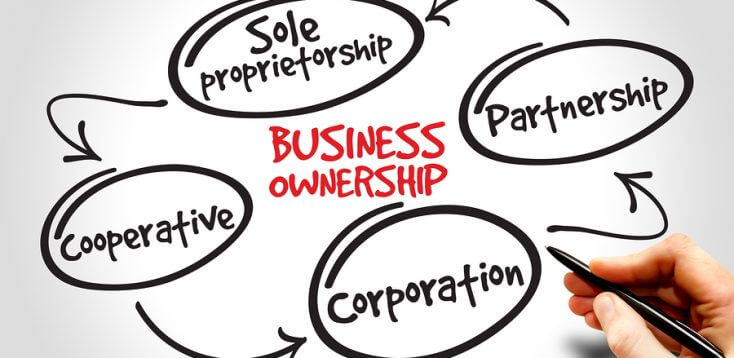How S Corporations Can Save on Federal Employment Taxes
Feb 06, 2017

If you own an unincorporated small business, you may be getting fed up with high self-employment (SE) tax bills. One way to lower your SE tax liability is to convert your business to an S corporation.
SE Tax Basics
Sole proprietorship income as well as partnership income that flows through to partners (except certain limited partners) is subject to SE tax. These rules also apply to single-member limited liability companies (LLCs) that are treated as sole proprietorships for federal tax purposes and multimember LLCs that are treated as partnerships for federal tax purposes.
For 2017, the maximum federal SE tax rate of 15.3% hits the first $127,200 of net SE income. That rate includes 12.4% for the Social Security tax and 2.9% for the Medicare tax.
The rate drops after SE income hits $127,200 because the Social Security tax component goes away above the Social Security tax ceiling of $127,200 for 2017 (up from $118,500 for 2016). But the Medicare tax continues to accrue at a 2.9% rate, and then it increases to 3.8% at higher income levels because of the 0.9% additional Medicare tax. (This 0.9% tax applies to the extent that wages and SE income exceed $200,000 for singles and heads of households, $250,000 for married couples filing jointly, and $125,000 for married couples filing separately. The tax is part of the Affordable Care Act, so it likely will disappear if the ACA is repealed or replaced.)
We’ll refer to the Social Security and Medicare taxes collectively as federal employment taxes.
| Example 1
Suppose your sole proprietorship is expected to generate net SE income of $200,000 in 2017. Your SE tax bill will be $21,573 [($127,200 x 15.3%) + ($72,800 x 2.9%)]. That’s a sizable amount — and it’s likely to get bigger every year due to inflation adjustments to the Social Security tax ceiling and the growth of your business. |
SE Tax Reduction Strategy
To lower your SE tax bill in 2017 and beyond, consider converting your unincorporated small business into an S corporation and then paying yourself (and any other shareholder-employees) a modest salary. Distribute most (or all) of the remaining corporate cash flow to the shareholder-employee(s) as federal-employment-tax-free distributions. Here’s why this SE tax-saving strategy works.
For compensation paid to an S corporation employee in 2017, including an employee who also is a shareholder, the FICA tax rate is 7.65% on the first $127,200. This includes 6.2% for the Social Security tax and 1.45% for the Medicare tax. Above $127,200, the rate drops to 1.45% because the Social Security tax component goes away. But the 1.45% Medicare tax component continues indefinitely. At higher wage levels, S corporation employees must also pay the additional 0.9% Medicare tax. FICA tax is paid by the employee through withholding from employee paychecks.
The employer then pays in matching amounts of Social Security tax and Medicare tax (other than the additional 0.9% tax) directly to the U.S. Treasury. So the combined FICA and employer rate for the Social Security tax is 12.4%, and the combined rate for the Medicare tax is 2.9%, rising to 3.8% at higher income levels. These are the same as the SE tax rates. That’s the bad news.
The good news is that S corporation taxable income passed through to a shareholder-employee and S corporation cash distributions paid to a shareholder-employee aren’t subject to federal employment taxes. Only wages paid to shareholder-employees are subject to federal employment taxes.
This favorable federal employment tax treatment places S corporations in a potentially more favorable position than businesses that are conducted as sole proprietorships, partnerships or LLCs (if treated as sole proprietorships or partnerships for federal tax purposes).
| Example 2
Assume the same facts as the previous example, except this time you operate your business as an S corporation that generates net income of $200,000 before paying your salary of $60,000. (Assume you could find somebody to do the same work for about that amount.) Only the $60,000 salary amount is subject to federal employment taxes, which amount to $9,180 ($60,000 x 15.3%). That’s significantly lower than you’d pay as a sole proprietor ($21,573). |
The Caveats
This tax-saving strategy isn’t right for every business. Here’s some food for thought as you consider changing your business structure:
- Operating as an S corporation and paying yourself a modest salary will save SE tax as long as your salary can be proven to be reasonable, albeit on the low side of reasonable. Otherwise you run the risk of the IRS auditing your business and imposing back employment taxes, interest and penalties.
However, you can help minimize the risk that the IRS will successfully challenge your stated salary amounts if you gather objective market evidence to demonstrate that outsiders could be hired to perform the same work for salaries equal to what you’re paying shareholder-employee(s).
- A potentially unfavorable side effect of paying modest salaries to S corporation shareholder-employee(s) is that it can reduce your ability to make deductible contributions to tax-favored retirement accounts. If the S corporation maintains a Simplified Employee Pension (SEP) or traditional profit-sharing plan, the maximum annual deductible contribution for each shareholder-employee is limited to 25% of his or her salary.
So, the lower the salary, the lower the maximum contribution. However, if the S corporation sets up a 401(k) plan, paying modest salaries won’t preclude generous contributions.
- Operating as an S corporation will require some extra administrative hassle. For example, you must file a separate federal return (and possibly a state return, too).
In addition, transactions between S corporations and shareholders must be scrutinized for potential tax consequences, including any transfers of assets from an existing sole proprietorship or partnership to the new S corporation. State-law corporation requirements, such as conducting board of directors meetings and keeping minutes, must be respected.
In most cases, these drawbacks are far less burdensome than the potential SE tax savings. Your tax advisor can help you minimize the downsides and work through the details.
Weighing the Upsides and Downsides
Converting an existing unincorporated business into an S corporation to reduce federal employment taxes can be a smart tax move under the right circumstances. If you are interested in making a switch Kirsch CPA Group will help you ensure that all the other tax and legal implications are considered before making the switch. Contact Pete Abner at 513-858-6040.
| Mechanics of Converting to S Corporation Status
To convert an existing sole proprietorship or partnership to an S corporation, a corporation must be formed under applicable state law and business assets must be contributed to the new corporation. Then an S election must be made for the new corporation by a separate form with the IRS by no later than March 15, 2017, if you want the business to be treated as an S corporation for calendar year 2017. If you currently operate your business as a domestic limited liability company (LLC), it generally isn’t necessary to go through the legal step of incorporation in order to convert the LLC into an entity that will be treated as an S corporation for federal tax purposes. That’s because the IRS allows a single-member LLC or multimember LLC that otherwise meets the S corporation qualification rules to simply elect S corporation status by filing a form with the IRS. However, if you want your LLC to be treated as an S corporation for calendar year 2017, you also must complete this paperwork by no later than March 15, 2017. Contact us to learn more about our accounting services Copyright 2017 |
Sign Up for Email Updates
Accounting & Financial News

6 Year-End Small Business Tax Saving Tips
There's still time for small businesses and their owners to implement strategies to save taxes for 2025.…

Manufacturers: Act Now To Claim the Sec. 179D Deduction for Energy-Efficient Building Improvements
The One Big Beautiful Bill Act (OBBBA) repeals or reduces many clean energy tax incentives, including the…




